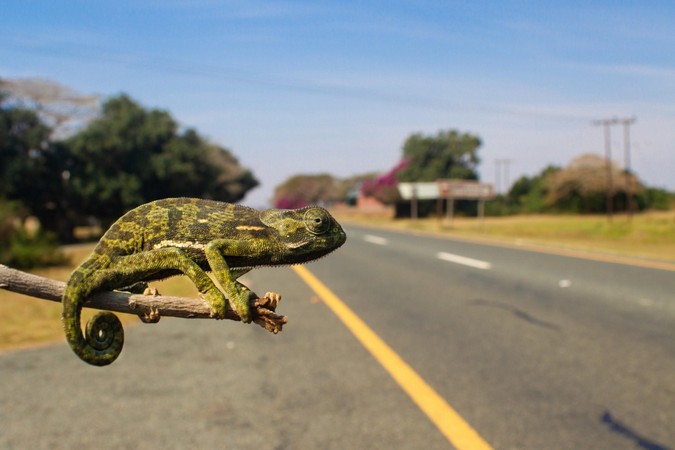
So what really has happened to all the chameleons in South Africa? This is a question you’ll often see pop up all over social media when someone posts a photo of one either in the garden or whilst on holiday in places such as the Kruger National Park. Many people are quick to respond with: “When I was growing up we used to see chameleons ALL the time”.
That may well be true, although 10, 20 or even 30 years ago people did spend a lot more time outside than they do now. Children played outside, climbed trees and came home when the streetlights turned on. In contrast, many people spend most of their time behind a desk, in an office, and you’ll find children stuck behind a multitude of screens.
Before we begin, there are some positives: If you know where to look, what to look out for, and know the habits of these miniature modern-day dinosaurs, then it is not uncommon to find dozens of them in small patches of suitable habitat.
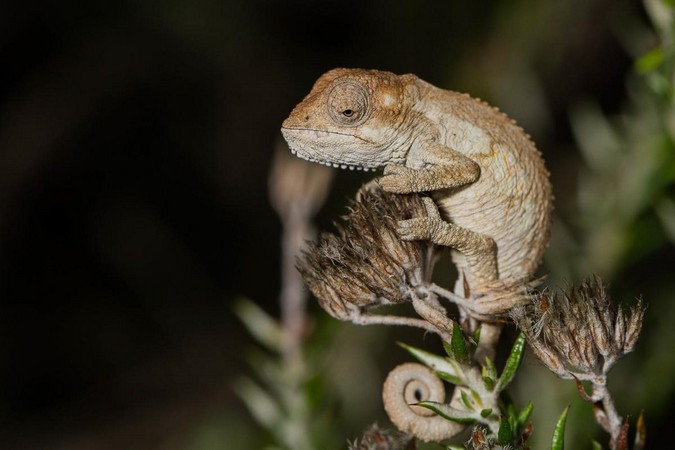
A quick insight into the chameleons found in South Africa reveals that there are currently 19 described species: two typical chameleons (Chamaeleo) and 17 dwarf chameleon (Bradypodion) species.
Chameleons can be found just about anywhere in South Africa (where typical habitat still occurs) from coastal forests, grasslands, savannah, montane forests, fynbos, renosterveld, karoo scrub and even suburban gardens.
There are several factors which affect the chameleon populations throughout the country
Habitat loss and fragmentation is an obvious factor that affects most wildlife, so this is not strictly limited to chameleons. When acres of natural habitat is cleared for housing development, agriculture, or road construction, these animals, if not killed in the process of earth moving equipment or killed out of fear by the workers, attempt to flee but often have nowhere else to go.
Many people find chameleons crossing busy roads and sadly they rarely make it to the other side alive. With the clearing of natural habitat there is also the loss of prey which the chameleons need to feed on, and without adequate food sources these reptiles are forced to relocate and again are forced to cross busy roads.

Domestic cats can have a crippling effect on local populations of chameleons as they make for easy prey. A single domestic cat can totally eradicate a population of chameleons in a suburban garden in a matter of months.
Suburban gardens generally made of up neatly manicured lawns, high walls and electric fences can pose as a threat to chameleons. Pristine, manicured lawns can create vast areas void of trees and shrubs which chameleons rely on to move around. Without green corridors of connected trees and shrubs chameleons are then forced to descend onto the lawns and become easy prey for a variety of animals (mainly cats and dogs). In addition, high walls (without vegetation) can prove to be too high for chameleons to traverse, and electric fences pose a risk of being electrocuted.
Many people do not like the idea of wild growing creepers as they may not be visually appealing, but these creepers and hedge rows provide the ideal habitat for these shy and secretive animals.
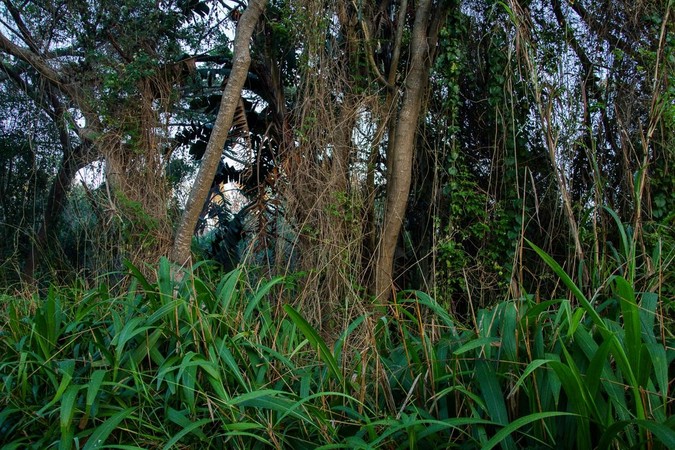
Pesticides and insecticides can have devastating affects on chameleons. Much like owls that feed on poisoned rats, a chameleon that unknowingly consumes insects that have been baited or sprayed with insecticides will suffer a similar fate.
Illegal trade of chameleons is a booming market in South Africa. For many years visitors to Sun City will have seen informal traders selling chameleons on the end of sticks, as well as tortoises. Although these informal traders are indeed a problem, it is important to look at the larger picture.
Large quantities of chameleons are collected from the wild and sold both locally and internationally. These indigenous chameleons are illegal to buy and when they are bought it is simply perpetuating a vicious cycle of supply and demand – so basically one is not saving or helping the species by buying chameleons from traders.
Fear and superstition, although not a major contributing factor to the decline of chameleons on a large scale, is still a factor. Many people (especially in African cultures) believe chameleons to be dangerous and are deadly or venomous – of course this couldn’t be further from the truth. There are many superstitions and beliefs that are associated with reptiles in general, and for chameleons some believe that they can shoot bolts of lightning from their eyes and are considered to be a bad omen, and are therefore senselessly killed.
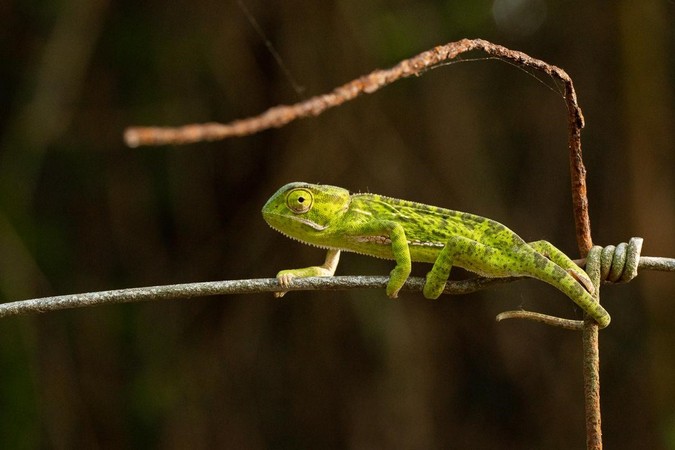
What can you do to help?
• Plant small trees and shrubs which provide chameleons with adequate protection and perches which will allow them to move around freely. Also, by planting indigenous flowering plants in your garden you encourage insects – the primary food source for chameleons. If a garden is planted correctly chameleons can, and will, thrive in suburban gardens.
• Compost heaps are not only an environmentally-friendly way to recycle your food waste (and adds nutrients into your soil), but they also help with attracting scores of insect life.
• Avoid picking up chameleons you see in the wild and taking them home. They cannot live indoors on a pot plant and feed on flies (unfortunately these animals will slowly die if subjected to such a life).
• Do not support the illegal wildlife trade in chameleons – remember you’re not helping by buying these animals as it only contributes to the problem.
• Transform small, neglected areas by planting indigenous trees or shrubs and clearing alien vegetation, creating a habitat where chameleons can thrive.
Read more about chameleons here or visit Chameleons of South Africa. If you come across a chameleon in your garden or whilst on holiday, and would like to know what species it is, you can email your photos to contact@tyroneping.co.za for an identification.
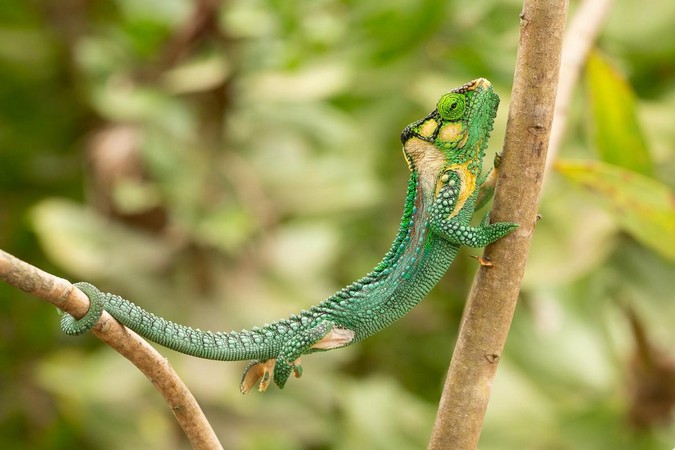
To comment on this story: Login (or sign up) to our app here - it's a troll-free safe place 🙂.![]()






